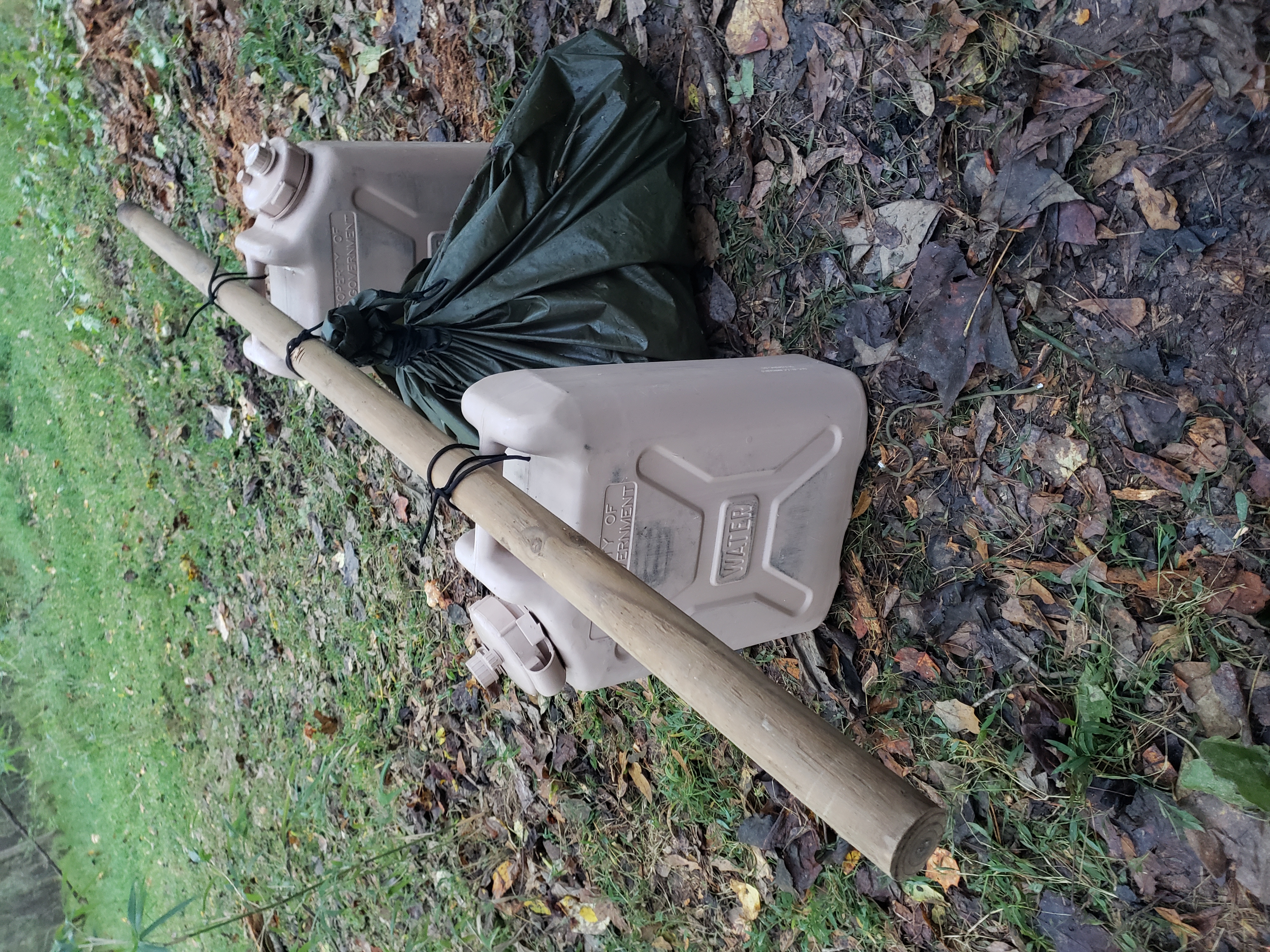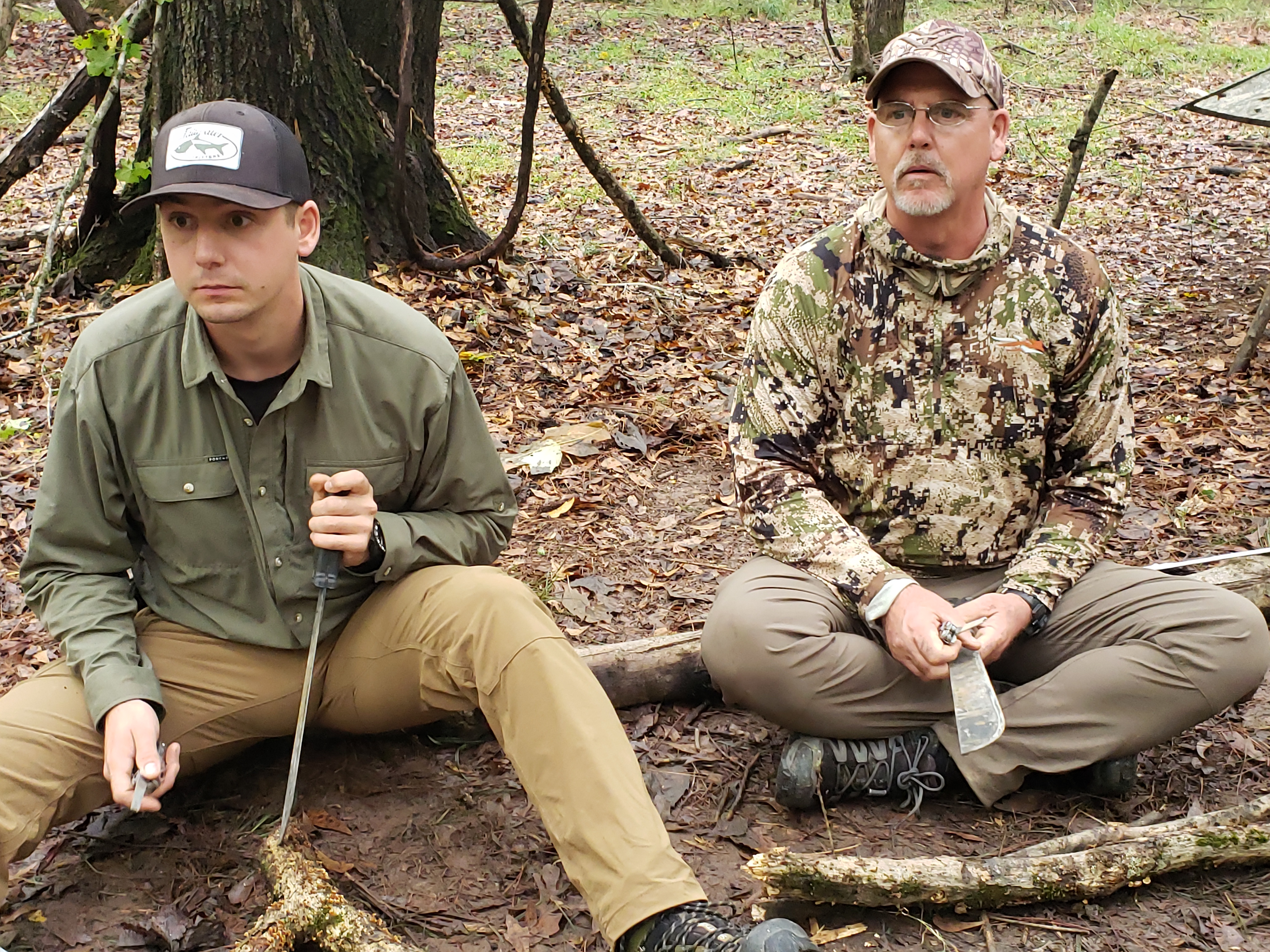Training can be horizontal or vertical. Horizontal training includes learning how to operate gear and learning basic skill sets. Vertical training is when the basics are made more difficult with training modifiers. Learning how to scrape a fire steel is horizontal training. Learning how to use a Ferro rod with cold and wet hands is vertical training. The best way to take training vertically quickly is scenario-based training. A good scenario provides context for actions and adds stress when students buy-in. When students asked me after the Modern Survival Skills and Overnight Survival Course, "What's the next step?" I had to have a good answer. With plenty of scouting, planning, and coordination, the Advanced Survival Experience was born. We recently ran the A.S.E. for the first time, and the six participants were challenged throughout the 48-hour field exercise. What follows are some of the lessons learned from this vertical training.
Every Match Matters
Due to "black magic" fears, the students' fire-starters were confiscated. The "Dogwood Tribe" was fearful of the use of Ferro rods and lighters. That's the benefit of creating a scenario. It allows the actors to make requests like that. During the scenario, students were not allowed these common fire-starting methods and were challenged to make fire with a single match and then maintain the fire throughout the course. This was easier said than done, considering the group camped in a damp valley, and torrential rain came in like clockwork at 10 pm the first night. One student commented, and I'll paraphrase, "It's different starting a fire when you only have one match." This comment struck me since we should treat every match like it is our last. We shouldn't waste what we have a limited supply of. The students realized the importance of keeping their fire going since they already used up their only match. They learned about 16 armfuls of wood would keep their fire fueled the entire night as well as banking a fire to slow its burn. One simple charge taught them so much. One of the most challenging aspects of the course was the land navigation course, when they were required to carry fire with them the entirety of the course.
The Belly Rules the Mind
We know the human body can go about three weeks without food, on average. Despite this, the drive for food comes from comfort more than need. Throughout the weekend, students could fish for food and try small game taken from the land. Students were also allowed to make twist bread over the fire and boil their food in #10 cans. With a gear limitation of approximately 10 pounds, they could not pack all the luxuries of a good camp kitchen, and they had to make do. Almost everything we did around the campfire was in a basic 16-ounce nesting cup. We stripped the students of their salt and seasoning packets. Even though food wasn't an actual necessity, the student remarked how good the food tasted with no seasoning at all. They also discovered how the drive to put food over the fire brought them together as a group. This connection was not unlike the many hunter-gatherer groups around the world.

Best Tool for the Job
Students were limited to a small belt knife on the course. They also were instructed to build shelters. Initially, they made individual shelters with the stipulation they had to be up off the ground. Students could bring hammock bodies but no suspension straps, meaning they would have to use paracord to suspend them and build natural rooftops. Without a sleeping pad, this meant sleeping cold. Some students constructed raised beds and used the hammock bodies to collect debris to sleep on. Between night one and night two, students were given machetes and a tutorial on sharpening them. The machete, they found out, is an excellent tool for chopping with an appropriate edge. Students learned they can press their knives to their limit, and that is about all you can ask of a tool. Using a knife, or any tool for that matter, to the furthest limit lets you identify what other tools would work better. This concept reappeared with discussions and applications of different tasks like fishing. They could cast only so far with hand lines and realized the reach a dedicated fishing pole could have given them. Whenever possible, they learned to choose the most robust tool for the job.

The Wiggles are Real
When it comes to shelter building, there are W's associated with any shelter. We must consider the Wind, Water, Widowmakers, Wood, and Wiggles. The wiggles appeared many times during the advanced survival experience. Black racer snakes over 3' in length were spotted many times in camp, and a highly invasive spiders the size of your thumb called the "joro spider" were stumbled upon many times. The snakes gave the students more of a shock than anything else, and we didn't harm any since the ones we saw were responsible for keeping the venomous snake population in check. The spiders, even though they looked terrible, were not capable of inflicting a sting much worse than a wasp. Headlamps at night also illuminated many other spiders that were found on the ground throughout the weekend, but they usually kept their distance. Despite warm days, we didn't have many flying insects along the river. Suitable clothing with long sleeves and pant legs is the only way to travel in the bush, and they can always be rolled up. Shorts and tees can't be made longer. The key takeaway from the wiggles is that they make your sleep at night less comfortable than in your own home, and you have to learn to become comfortably uncomfortable.
Community
Before the course, I called each student to connect with them. After getting the green light to share the students' contact information with one another, they started game-planning the event from the team's perspective. For a group of six, the perfect sized class for this type of training, it's important for the students to know one another and what each person is capable of. The group learned what each person was proficient in, along with their background, gear carried, and general small talk. When the group was first thrust into the scenario, they struggled to find that rhythm working together. Eventually, they discovered the language needed to build teamwork and started dividing labor to avoid having the road crew phenomenon of one guy working and five others looking on with clipboards. From the instructor's point of view, both Gerry and I had a proud parent moment when we watched the students hit that stride of working together, getting tasks done without having to talk them over too much, and just working like a well-oiled machine with many moving parts.

At the end of the event, the students had an opportunity to sit down and break biscuits and gravy with one another. We had an almost 2 hour after-action review that included so many lessons learned, a full recap of the weekend chronologically, and a charge to do more together. This course was described on the website as being 50 percent training and 50 percent application of skills. There were times when the students received formal instruction and times when the students were left to work on their own. Providing too much instruction makes the course more horizontal when the intention is to take the students vertically. Given the feedback from the students, the course was the right blend of practical application and challenge. It was well-scripted, carried out, and repeatable. There's no doubt it will come around again. If you've been training and are looking for an opportunity to test yourself, take your training vertical. Training should never level off.
*Special thanks to Chef Ralph for the great meals, Dogwood Chief Dan Eastland for being a great host, Gerry Young for being the medicine man, Jose A. from Fieldcraft for making a great poster, Jeff W. for pushing out the course to the Email list, and Rob F. from Exotac for providing the giveaways for the course.
